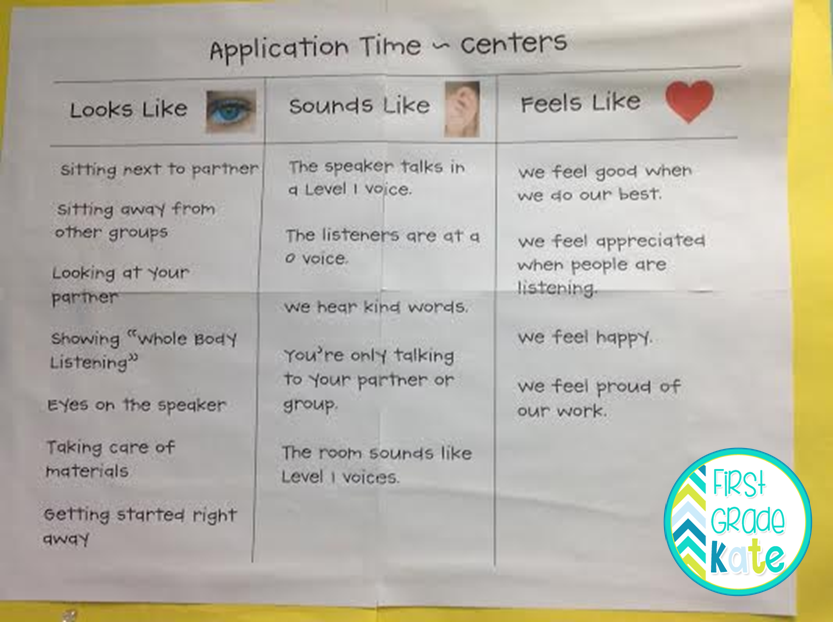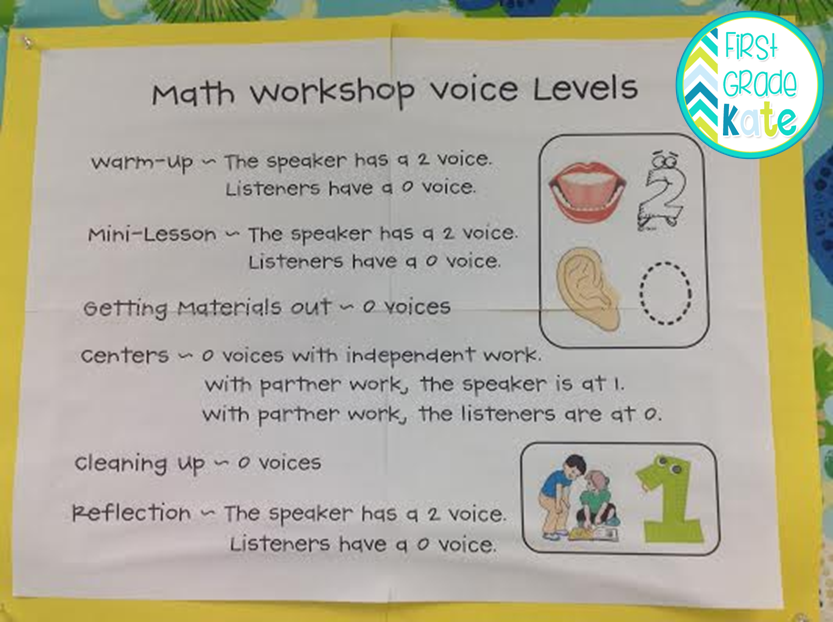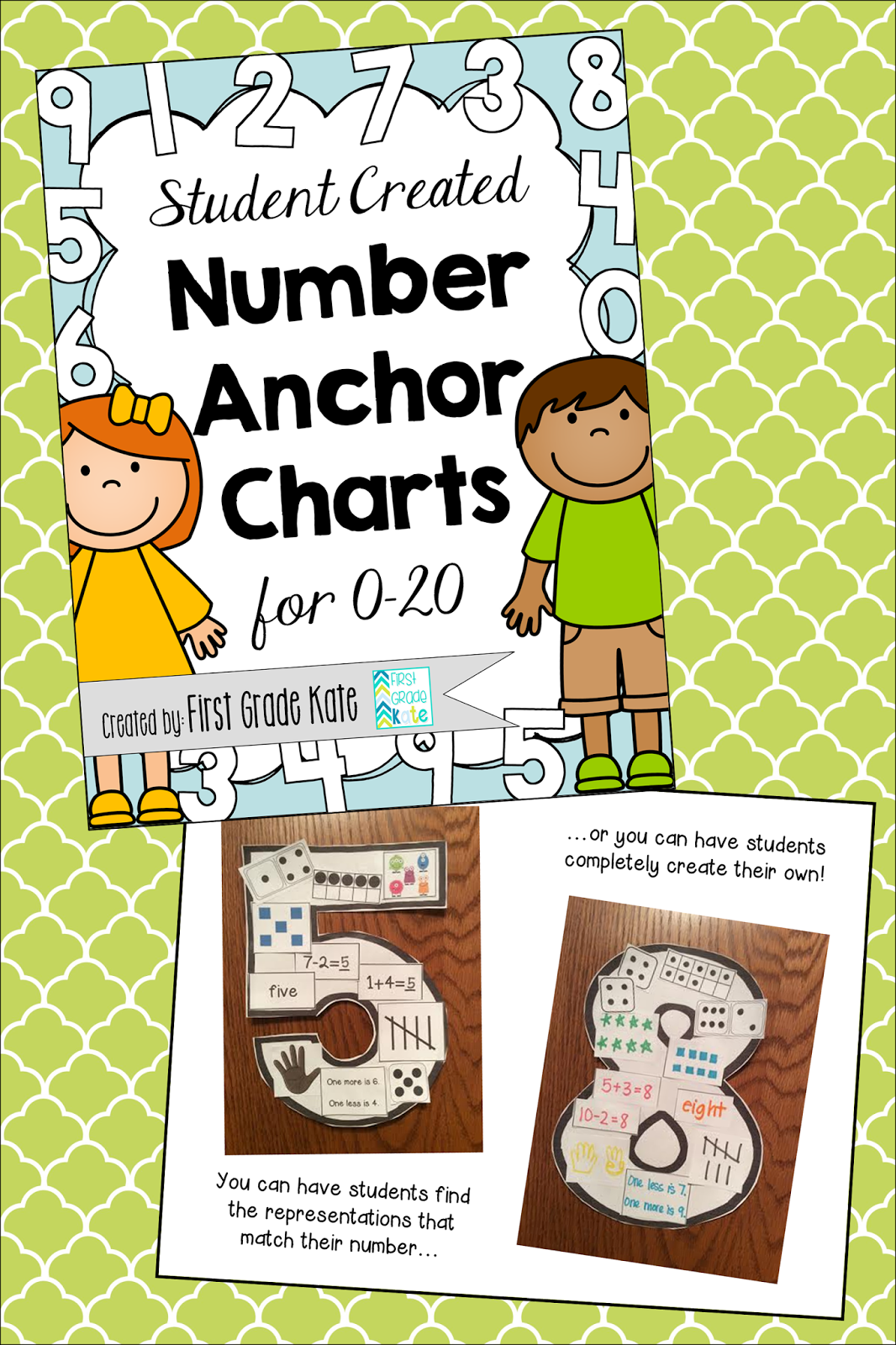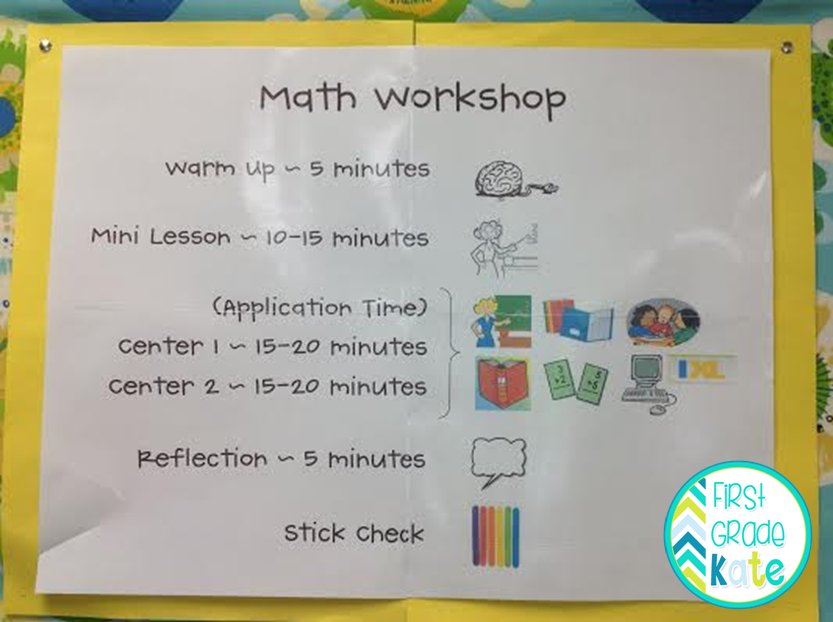It's time for Round 2 of Laura's "Diggin' Into Next Year" linky party! This week's topic is Math Workshop. I titled this post, "The Good, The Bad, and The Wonderful" of Math Workshop because I really don't think there's an "ugly" to it...I <3 Math Workshop!!
This year was my 2nd year doing math workshop, and while there are still wrinkles to be ironed out and things I want to tweak, I really think it's benefited my kids and had a big impact on student achievement. Here's a little bit about how I ran it this year...
My math workshop is broken down into a few main components: our whole group mini-lesson, application time, and then something at the end to review or share. My mini-lesson follows our district's pacing guide, and I really try to keep it short and student focused. By that, I mean that I'll present a problem or two and ask the students to solve them, talk about them, and defend their answers. If we have any new math vocabulary, I put it up right next to the Smartboard. The math vocab cards are from Anna Brantley's TPT store, and they are absolutely fabulous!
Next comes "application time". I have my students select an activity to do from their "menus". I've found that menus are a great way to differentiate, allow for student choice, and to keep track of where everyone is during this time! Here's a menu after it's been used for the week...I have them cross off where they go each day so they (and I) keep track of what they still need to do.
 |
| A rolley cart is great for keeping track of math folders for 3 classes! |
As you can see from the menu above, my students have "Must Do" activities and "Choice" activities. They start off at a must do each day, and that usually takes them about 15-20 minutes. When they're done with that, they can pick a choice activity to do. I like this setup because if a kid isn't working hard, it will take them longer to complete their must do and they have less time at a choice activity. (On the other side of that coin, I or my aide check any work they turn in to make sure they didn't rush through something in order to go to choice. If it's not best work, they re-do it. It only takes 1 or 2 doing that before the whole class realizes that rushing isn't a good idea.) :)
One must do is coming to me for Guided Math. I have them all scheduled to come once or twice during the week, but I've purposely not booked the whole math block with guided groups because I want time to work with students outside of the guided math table as well. I have the schedule posted on the wall so they know when it's their turn to visit me. (All the names are covered for privacy reasons.)
I have the kids grouped by ability (and represented with a picture) for guided math groups, but the groups are flexible (is "flexible grouping" a buzzword in anyone else's district?! geesh with all the terms!) and change frequently. Everything else is grouped heterogeneously so kids have a chance to learn from everyone, not just kids in their own ability group. A book that's been really helpful for me is Dr. Nicki Newton's "Guided Math in Action" book.
Other "must do" activities are folder work (a sheet of paper/pencil work...I just call it folder work because that's what I heard another teacher in my building call it!), iPads, and my aide's table. The activities at my aide's table vary from week to week, but may include introducing a math game, completing a problem solving or math journal activity, or reviewing topics from previous units.
 |
| I don't have a fancy place to keep my iPads...this green tub works well for the five I have. I really like this sign ($1 from Ikea) to remind students of the rules at our iPad center. |
Here are a few close ups of what's on the board...
 |
| Click the photo to grab your own copy of this chart! |
 |
| Click the photo to grab your own copy of this chart! |
 |
| **I couldn't find a copy of this sign to share...so sorry!** :( |
Next year, I would like to incorporate (even) more problem solving and writing about math into my Math Workshop. I did some this year, but I think I can improve in this area. I would also like to differentiate my math game area a bit more so that students are getting more practice with something that's "just right" for them, but I'm still mulling over ways to do that. Whether this happens or not, I definitely want to do more teaching around how to pick a "just right" math game.
Most things are staying the same...I think. :) I might get some crazy, hair-brained idea over the summer that I just *have* to try, but overall, I really like how my Math Workshop runs. One thing that comes to mind, however, is organizing my iPad apps a bit more. Right now they are all in one "Math" folder, but I would like to break them up by strand or ability level. We'll see...
 | |
| Here are some of my students' favorite apps in my "Math" folder. |
If the signs on my bulletin board will be helpful for you, please feel free to grab them by clicking on the photos. (Note: The voice level chart and the "looks like, sounds like, feels like" are in the same document.)
Also, I try not to focus a lot on my "products" (I hate that word) or my TPT store, but I have created several math centers and other math related products that are available in my TPT store. If you are so inclined, you can click here to check them out!
 |
| Math fact fluency sorts for the entire year! |
 |
| Materials to help your students make their own number anchor charts! |
One final note on Math Workshop...if you are hesitant to jump in, please please please take some time this summer to research it, blog stalk it, Pinterest it, etc. I was very nervous to have all the small groups and use the menus at first, but with careful setup and management, I can say that it really has transformed my math instruction. I'm able to better differentiate for the needs of my kids and really get to know them as mathematicians, which is something I couldn't say when I taught math whole group. If you have any questions or comments about Math Workshop, please feel free to leave them in the comments section below or email me at firstgradekate {at} gmail {dot} com.













Hi Katy! I definitely think "flexible grouping" is a buzzword, especially since it makes sense! Love that you have all of your expectations posted! What a great reminder for students!
ReplyDeleteTheresa @ True Life I'm a Teacher!
Thanks for sharing the picture of the used student menu. I've never used menus, and didn't really know what people meant when they talked about them. Nice post!
ReplyDeleteDeb
Not very fancy
Hi Katy!
ReplyDeleteI stumbled across your blog when I was looking for ideas to strengthen my math workshop! You have definitely given me a lot to think about! I noticed you said you teach 3 math groups- how does this work?? I'm curious because a teammate and I are switching some kids this year so I teaching math twice- but I would love to teach it all day long!
Thanks for any info!
Jamie
Hi Jamie!
DeleteThanks for your comment. The district I'm in specializes (or departmentalizes) even at the elementary level, so I do teach math to all 3 first grade classes. My grade level team has a schedule where the kids rotate between our classrooms for reading, math, and science/writing. This pin explains our schedule: https://www.pinterest.com/pin/500673683549600686/. I flexibly group within each class, but the whole class travels together, so I am still only seeing one "homeroom" at a time. Hope this helps a little bit- feel free to email me at firstgradekate@gmail.com if you have further questions! :)
- Katy